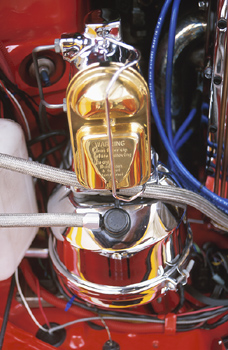How to Replace a Starter
Without a proper working starter in your car, your vehicle isn’t starting up and going anywhere. Learning how to replace a starter yourself can help offset the costs of this frequent repair. You might be wondering how to know when your starter isn’t working.
When your car doesn’t start, it can be several faulty parts: a partial list of suspects would be the battery, the solenoid, the engine switch, the flywheel and the starter.
If the battery is the problem, nothing usually happens when you attempt to start the car. However, if there is a charge and you try to start the car, you get a clicking sound or nothing.
The clicking means that the car has the power and is trying to start. There’s a good chance the starter is fried. But if your car won’t start, don’t automatically assume that it is the starter.
It’s a good idea to check certain parts under the hood, to make sure it isn’t the starter. Check the battery, the battery connections, the starter solenoid and any other component that might have to do with starting your car.
Other options include, but are not restricted to, spark plugs, a dirty air filter or even blown gaskets. Once you have established that those are running properly, by process of elimination, the starter is at fault, and it’s time to get to work.
Study How to Replace a Starter
Disconnect the battery. If you don’t disconnect the battery first, you run the risk of getting a nasty shock. In fact, you could severely hurt yourself.
Take wheel chucks and place them behind the back wheels, so that the car doesn’t roll backwards, when hoisted up. Jack the front of the car up, so you can gain access to the starter from underneath.
While working under the car, it’s important that you be careful not to touch any electrical connections.
Locating the Starter

How to Replace a Starter
Locate the starter. The first place to look is on the driver’s side underneath the manifold. The starter will look like an 8 inch cylinder about 6 inches across. One end of the starter will have air holes and there will be two electrical connections and a mounting connection. In older model cars, it may be possible to get to the starter from the top but it will most likely be down in the engine compartment itself, which means you will have to hoist the car up on jacks.
Removing the Starter
The two electrical connections going to the starter need to be removed and tagged, so you know where to connect them to the new starter later. You want to tape these to something, so they don’t get in the way while you’re working. When you’re done removing the electrical connections, use a ratchet or crescent wrench to remove the mounting connection from the starter.
If the vehicle is old or there is corrosion on the mounting connection, spray DW-40 around the connection point, so it can be removed easily. Be careful not to strip the bolt because, if you do, you’ll have to take your car into a garage to have it professionally fixed. Once the connections have been removed, take out your old starter.
Replacing a Starter
The first step to replacing a starter is to put the starter in where the old starter was. Make sure to install the new one in the reverse order that you took the old one out. Connect the new starter to the mounting connection, but only tighten the nut slightly. Once you have that done, replace the electrical connections, starting with the ground cable.
Make sure you remove the tape, so that it doesn’t melt and burn up later when running your car. Once you have everything attached, go back and tighten up every connection, to make sure that nothing comes loose in the future.
Once the new starter is connected, go back and connect anything you may have disconnected, such as the battery. If you removed something and forget to reattach it, you might cause more damage to your car than there was before.
Always double-check your work and make sure that all connections are in the right place and secured tightly. Start up the car, to make sure that the starter works and is running properly.
Once you’re done checking your work and making sure everything is working properly, turn off the car and lower it from the jacks. Start it up again and remove the wheel chucks from the back tires, so that you can back up, if need be. Let your car run for a while, to get the starter warmed up and broken in, so that you can listen to see if there are any problems.
If the car starts up without any problems, you now know how to replace a starter.
